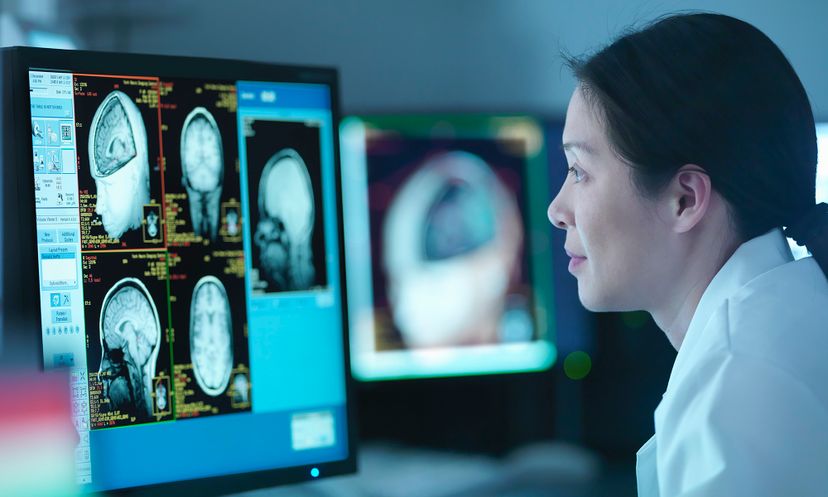
About This Quiz
An MRI machine is more than just a big, claustrophobia-inducing tube. How much do you know about what's going on inside -- or what's going on inside your body while you're in there?As its name suggests, a magnetic resonance imaging (MRI) system has a magnet at is core. This magnet is so powerful it can suck metal objects into the tube (and out of a person's body).
The 1977 conduction of the first-ever MRI exam was a breakthrough in medical science. It let doctors examine the interior of the human body in a way that had been impossible.
Hydrogen atoms have one proton and a large magnetic moment. This means they react strongly to magnetic fields and are ideal for examination in an MRI machine.
Advertisement
An MRI's RF pulse changes the spin, or precession, of atoms' nuclei. The hydrogen atoms line up with the direction of the MRI's magnetic field.
Although all three types of magnets can be used in an MRI machine, the superconducting magnet is the most common. In general, large enough resistive magnets are too expensive, and powerful enough permanent magnets are too big.
At normal temperatures, it would take lots of power to send electricity through all the wire in a superconducting magnet. But at the very cold temperature of liquid helium, there's almost no resistance in the wire, greatly reducing the need for power.
Advertisement
Imagine each hydrogen atom as a tiny magnet. In the MRI machine, they all line up. When the RF pulse disappears, they go back to their normal positions, releasing energy, which the system uses to make an image.
Gradient magnets are small magnets that change the field within an MRI system. When turned on and off very rapidly, they essentially change the focus of the overall field.
Fourier transform uses mathematical functions to change the data retrieved by the MRI system into a picture that a doctor can examine to make a diagnosis.
Advertisement
The stronger the main magnetic field in an MRI, the louder the banging will be when it encounters the current in the gradient magnets' wires. For this reason, many MRI centers give patients earphones or earplugs.